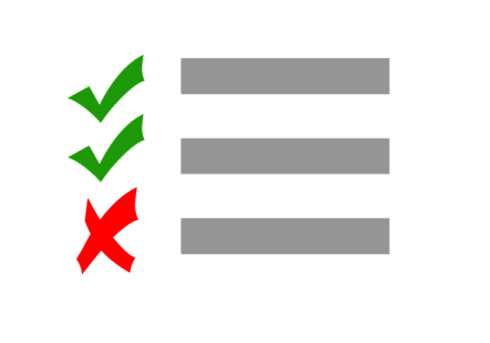
In the wake of the coronavirus pandemic, hearing people talk about the “new normal” has become, well, the new normal. Much has been upended to say the least—and some shifts are extremely relevant to the product development realm. For instance, I predict it will become the “new normal” for restaurants to have their own products to support online ordering and delivering, as third-party services are shaving already-thin margins. In order for those products to be successfully developed, though, team alignment must also be standard operating procedure.
In my experience, failure in the product development world more often than not happens before development starts. A project’s earliest stage lays the foundation for success or failure. In order for teams across industries to execute large or small-scale development projects, alignment needs to happen on the front-end. A lack of shared understanding among the stakeholders (i.e. marketing, engineering) on product goals, business needs, user personas and technology can spell disaster. If planning is neglected, projects will often experience scope creep, be over-budget, incur schedule delays, or won’t deliver the required features—if they are delivered at all. Let’s break down what sufficient planning looks like.
Product vision roadmapping
It’s common knowledge that when you’re building a house from scratch, you don’t start by pouring concrete or standing up walls, but begin with extensive planning that gradually leads to development. Planning identifies problems, constraints, and bubbles up solutions. The net result of this planning is a product roadmap that provides much-required shared understanding for those involved with the creation of the house. The above metaphor applies perfectly to successful product development.
It’s imperative to make sure everyone is on the same page regarding the overall vision: what is being built, what problems are being solved, what constraints exist (i.e. time, cost, events) and why. It may seem obvious to say you must define the problem before you can implement a solution, but far too many companies skip over this step. Every good product is rooted in understanding a problem your customers are having. This requires good user research, which we’ll dig into later.
To develop a product vision, your company should hold workshops that define key business drivers and set clear goals in a way that company executives, investors and Board members can understand. These goals can be generalized or specific KPIs, as long as decision-makers are aligned on them. Mapping the product vision means balancing conflicting priorities and opinions from various stakeholders: what executives envision versus what salespeople and customer service people need, for instance. Articulating this vision specifically and across multiple teams ensures all smaller decisions are in alignment with the big picture.
Persona identification
Some companies build anything a user requests without taking the time to understand them and how to best solve for their needs. The product planning stage should include parsing those requests to determine which align with revenue goals or company transformation efforts. That can’t be done without a deep understanding of user personas. Often, our assumptions about users are tremendously off base and can lead to products that aren’t as valuable as they may seem. Imagine a Groupon-like app, for instance. If you only conduct research on how to reach end consumers, you’re missing a huge part of the funnel—the small businesses and merchants themselves. How easily a non-technical person can upload a daily deal will ultimately impact revenue. Think of personas as a way to communicate buyer behavior, which then helps turn goals into real work.
Persona identification is a way to identify different users—not just merchants and consumers, but the variance between such categories. It starts with the concept of “design thinking:” who is the customer, how to derive value, how to align with finite resources and more. Some users are new, some are heavily engaged, and some may not be valued constituencies anymore. You must know which users you’re targeting and what pain point of theirs you’re addressing. This can be done through user interviews or proto-personas based on existing knowledge.
Creating these personas allows teams to highlight gaps and assumptions to ensure the customer’s needs are understood before starting the development process. Personas guide the product decisions and ideation workshops, as well as the creation of user stories and, ultimately, the product roadmap; which depicts priorities, dependencies and interrelationships. For an e-commerce company, one persona might be users who abandon their shopping carts. By doing the proper research, the company may realize a lot of high-ticket items are abandoned in these carts. A product that could solve this problem would be a daily digest email about their unpurchased items, which includes the option of buying on layaway.
Tech ecosystem evaluation
Once the vision, including who you’re building the product for and why, is mapped out, it’s time to start thinking about what technology will be used to build and deploy it. The challenge with technology is that you can build anything. Healthy constraints drive good software, though, and those constraints should include evaluating the trade-offs of different platforms.
Most companies already have a lot of experience deploying a specific tech stack. Your goal should be to play to your team’s strengths in this regard. Consider what technologies your team is experienced with before you radically adjust your stack. There is a near infinite combination of programming languages and tools available at your team’s disposal, and the rate of change in this domain is only accelerating. New technologies are certainly exciting, but oftentimes best practices are not fully baked and require staff development along the way, therefore reducing your product development velocity and potentially decreasing quality (bugs). In this rapidly changing environment, the best solution is to leverage what your team has the most experience with, which allows them to create value for your product faster and with greater quality. The key here is to encourage and empower your team to learn about newer technologies that may support your product tech stack, such as automation tools in the ever-growing domain of Developer Operations (DevOps). Don’t make tech decisions for the sake of tech – your customers generally don’t care. The potential of the productivity of your team should always be used to drive your decisions here.
Far too often, front-end planning gets neglected in a race to deploy a product as quickly as possible. Developing new products quickly is even more important in today’s more digitally connected world. Really, ensuring sufficient planning should also be included as part of the “new normal” for every company. It will actually speed up development while fighting against cost and scope creep. And by aligning various stakeholders, you’re also aligning the product with revenue. Taking the time upfront to discuss the vision, user personas, and technology will pay off in the end. Skip over this step, though, and it will show on your bottom line.






